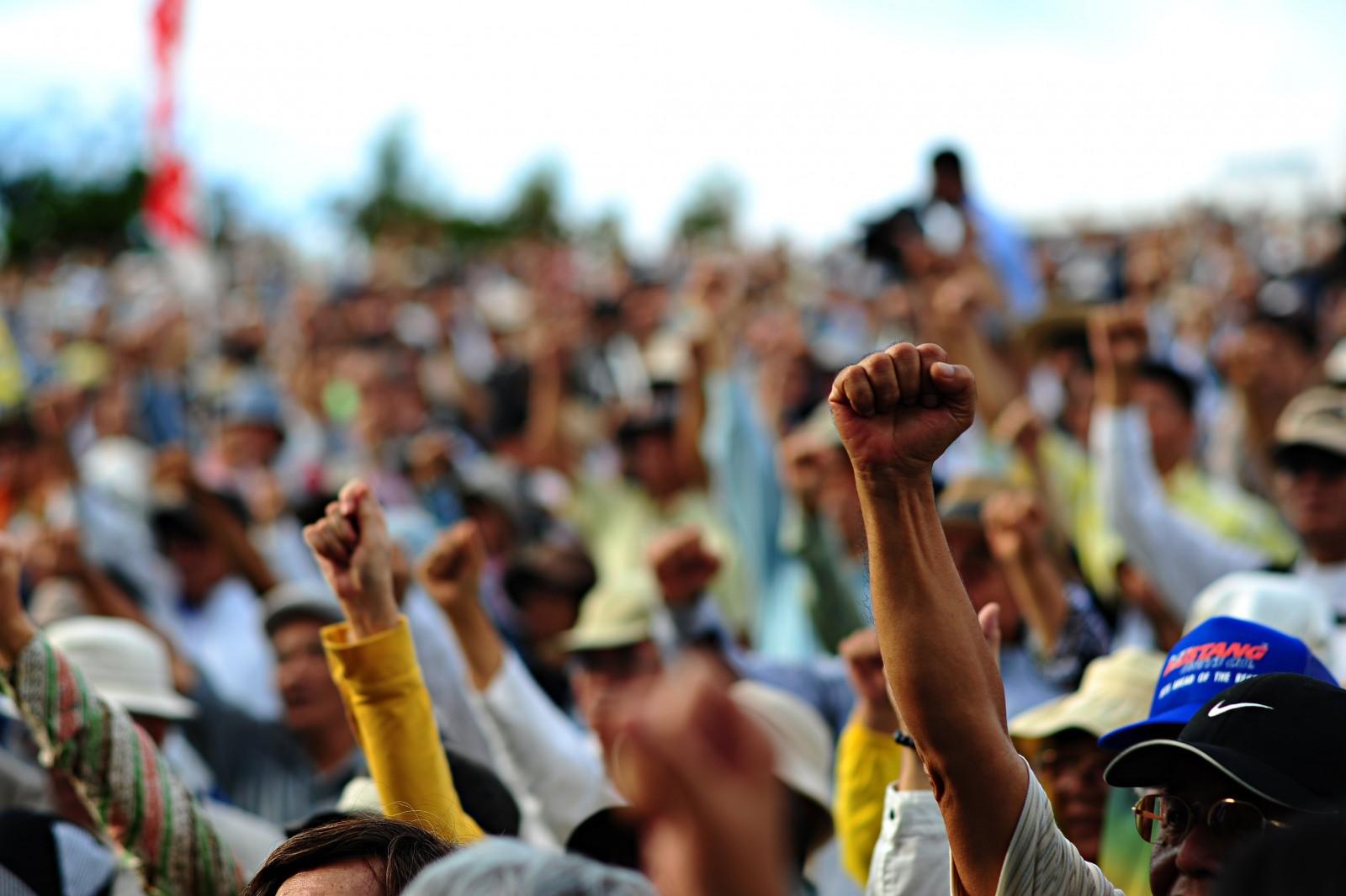These days, protests are beginning to look more like pro-messes. At a Saturday rally for Democratic candidate Vermont Sen. Bernie Sanders, a topless woman sat on a man’s shoulders to protest Republican presidential candidate Donald Trump, The Washington Post reported. As Sanders was talking about corporate greed, the woman climbed on a man’s shoulders and removed her top to reveal the phrase “stop fascism” painted on her back. She was soon escorted out by security.
In other protest news, the second person in two weeks was punched at a Trump rally in Tucson, Arizona on Saturday, according to The Washington Post. Trump addressed protesters at that same rally as “professional agitators.”
More than 50 anti-Trump protesters blocked a main roadway to the Phoenix rally, The New York Times reported. Some protesters chained themselves to cars, while others marched toward the Trump rally but were soon stopped by police officers on horseback, according to the Times.
That same day, several hundred protesters surrounded Trump Tower in New York, the Times also reported. When the protesters refused to leave after a confrontation by police, officers pepper sprayed the crowd.
This election season, along with the protests and the candidates who react to them, has resorted to madness.
Most U.S. citizens have the power to vote, but some feel so passionately about certain candidates this election cycle that they feel compelled to do something before polls even open. Protesting is now a moral decision and not a political one.
There’s no point in protesting if protesters’ actions won’t incite change. Violent protesters should, of course, be removed from rallies, but peaceful protestors should be welcomed.
Protesting probably won’t stop people from voting for their favorite candidates. If anything, rally-goers who see protesters will only hold to their positions more strongly to defend themselves in the face of opposition.
This election, protests are good indicators to candidates that maybe their positions on issues don’t reflect what some Americans want. It’s a nice way to tell Hillary Clinton that people think she’s inauthentic, or to let Trump know that most people think he’s a racist bigot.
Just look at how protesters shut down Trump’s March 12 Chicago rally as a testament to the good old-fashioned power of a protest.
On a more specific note, Trump and his responses to protests are prime examples of how politicians shouldn’t handle protestors. He repeatedly absolves responsibility for his actions and never asks himself why people feel compelled to protest at his rallies. This disrespect for protesters in turn motivates protesters to mobilize at Trump’s rallies even more.
A big part of being president is bearing the accountability of all political decisions. Elected officials shouldn’t just take credit for the good stuff and ignore these critiques. People don’t protest because it’s a fun thing to do on the weekends. They protest for change.
But no matter how responsive a candidate is, there will always be someone who disagrees.
Not to discount protestors, but they often get carried away in an effort to just be seen. The topless protester at the Sanders rally most likely knew the media would see her if she exposed herself. Her statement was overshadowed by her stunt, and in the middle of a pro-Sanders crowd, her words didn’t seem to be making a difference.
Media shouldn’t perpetuate the cycle of glorifying protestors. Though covering large protests is necessary to tell the complete story of what goes on in a presidential race, covering some protests more than others can prime people to consider only one viewpoint — the protesters’ — in the future.
At the core of the nifty American protest is nonviolent passion. That passion should never translate into threats. And though it’s easy to do, it should never overshadow the broader message of a protest.






















































































































